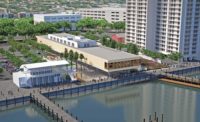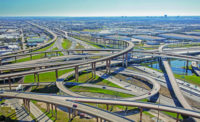Architecture and engineering firms across the Southwest saw plenty of work during 2019, but the COVID-19 pandemic looms over the remainder of 2020 and the impacts could result in a stark turnaround from last year.
The top 55 firms ranked on ENR Southwest’s annual Top Design Firms list reported combined regional revenue of $1.16 billion for 2019, slightly behind the $1.17 billion total for the top 55 firms in 2018.
State-by-state breakdowns indicate growth as well. The top 10 firms doing business in Arizona reported $374.8 million in combined statewide revenue for 2019, compared with $365.9 million in 2018. Meanwhile, the top 10 firms in Nevada reported $172.75 million for 2019, compared with $154.14 million in 2018, and the top 10 firms in New Mexico reported $205.57 million for 2019, compared with $196.25 million for 2018.
Gensler, which completed work across all three states in 2019, saw its Southwest regional revenue grow by about $7 million to a total of $35.48 million.
|
Related Link |
Martha Abbott, co-managing director of Gensler’s Phoenix office, said that “2019 was a strong year where we have seen growth in our workplace sector for corporate offices as well as the private sector, with a lot of mixed-use and live-work-play environments being paramount.”
“We’ve seen a real need from our clients that are looking inward to create a vibrant sense of places where they can attract and retain talent,” she says. The firm will be moving into a new Phoenix office this year, and creating an agile workplace is one the strategies Gensler is working on with its clients as they plan to return to work post-COVID-19, Abbott adds.
About six to eight weeks before the pandemic-related shutdowns began, the economy in Las Vegas was strong, with new projects underway on and off the Las Vegas Strip and in all market sectors, says Dwayne R. Eshenbaugh, 2020 American Institute of Architects Nevada Chapter president and principal and owner of NOVUS Architecture in Las Vegas. “Las Vegas firms were busy and competing for new staff on a regular basis—we are still experiencing a professional staff shortfall from the 2008-09 recession,” he says.
The pandemic will have lasting impacts on the architecture and engineering industry, he says. “Architectural firms have dispersed their staff to work remotely from the safety of their homes,” Eshenbaugh says. “One of the most interesting observations is that I believe we are more communicative and collaborative than we were in the office. Maybe it’s time for a sustainable shift in our profession as we move to a remote scenario—it seems to be working well after six weeks.”
Meanwhile, the AIA’s Architecture Billings Index (ABI) score of 33.3 for March released on April 22 showed that demand for design services from U.S. architecture firms recorded a record fall in March—the largest single-month decline seen in the nearly 25 years it has tracked the index.
“Those colleagues that I have spoken with share a similar position of being busy. With that said, I am most concerned about securing new work in the coming weeks and months ahead,” Eshenbaugh says. “That is the unknown right now: Will our practices be sustainable in the third and fourth quarter of this year?”






Post a comment to this article
Report Abusive Comment